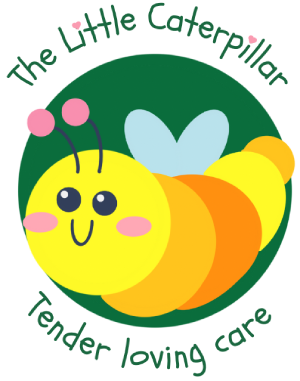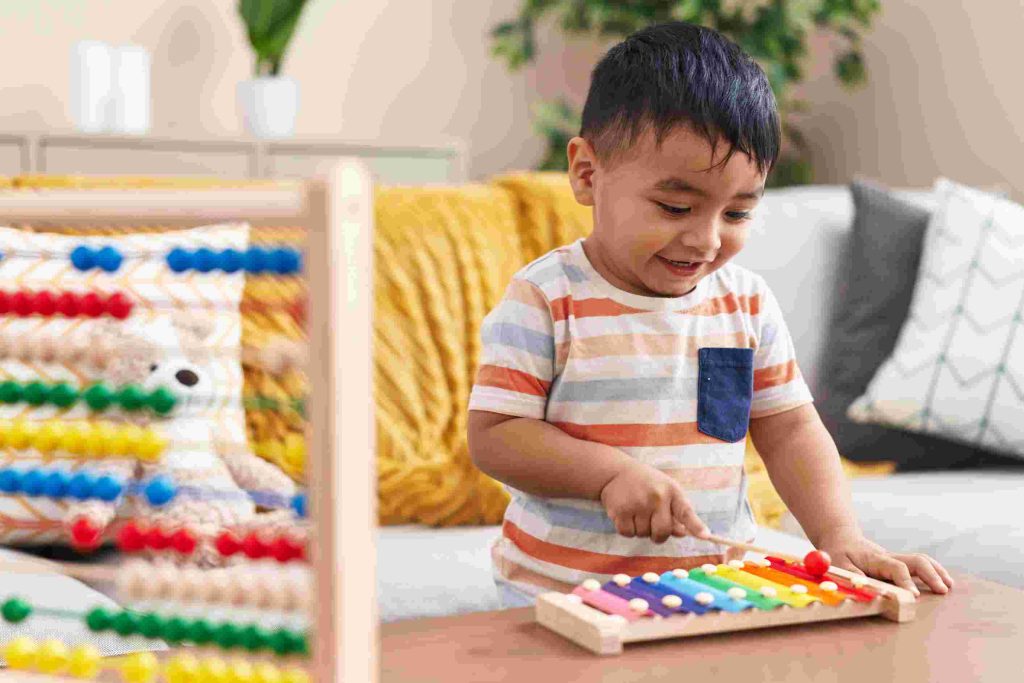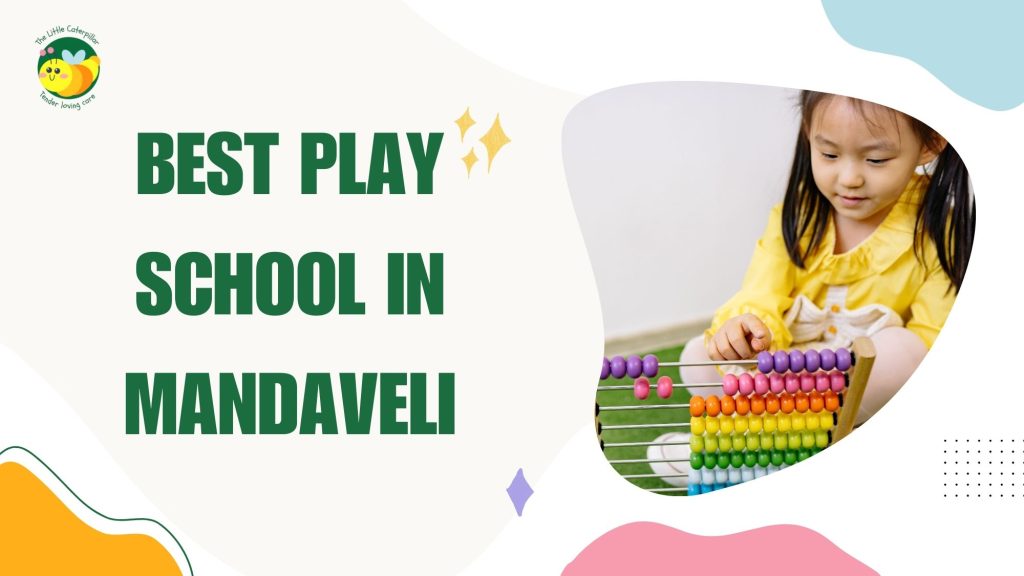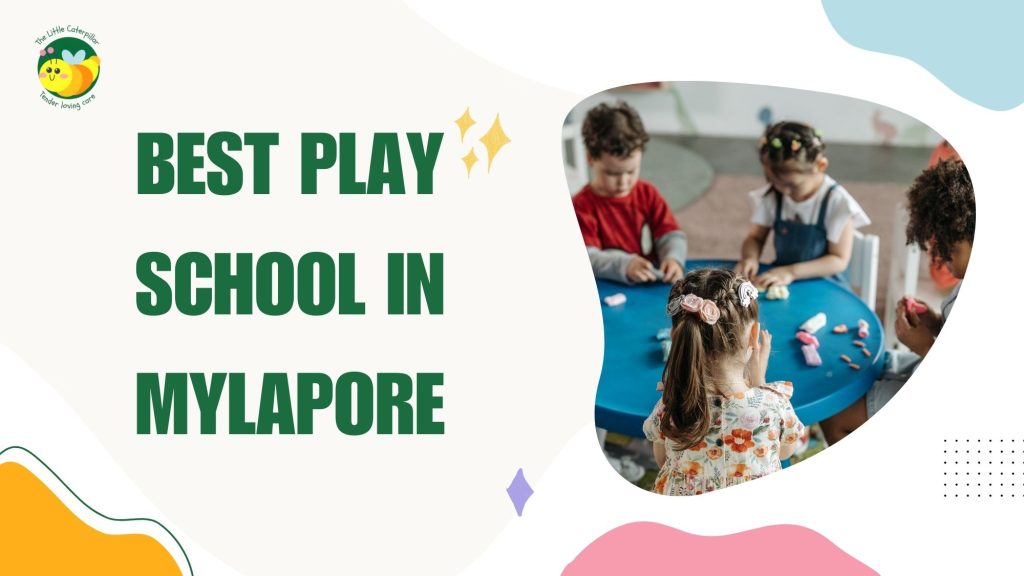Table of Contents
Introduction
In the heart of Chennai, Little Caterpillar stands as a shining example of how early childhood education can be both innovative and rooted in tradition. This unique institution blends Montessori and Reggio Emilia educational philosophies, offering a learning environment that deeply respects Indian cultural heritage. Central to its approach are the powerful tools of music, dance, and movement. These elements are not just activities but integral components that play a crucial role in fostering creativity, physical coordination, and emotional expression in children. This essay delves into the many benefits that music, dance, and movement offer in early childhood education, and how Little Caterpillar effectively uses them to support the holistic development of young learners.
Why Music, Dance, and Movement Matter in Early Childhood Education
Music, dance, and movement are much more than enjoyable activities for young children—they are essential forms of expression that help shape their development in profound ways. These activities offer numerous opportunities for sensory exploration, self-expression, and social engagement. Through music, children explore sounds, rhythms, and melodies that stimulate their brain development and help them improve their language skills. Dance and movement, on the other hand, enhance physical coordination, balance, and motor skills, allowing children to express themselves creatively while developing fine and gross motor abilities.
Research has shown that engaging children in these creative practices supports their cognitive development by improving memory, attention, and problem-solving skills. Additionally, these activities provide emotional benefits by helping children regulate their emotions and build resilience. Through movement and dance, children learn to navigate their feelings and communicate their emotions, often in ways that words alone cannot express.
Incorporating music and dance into early childhood education also plays a significant role in shaping a child’s social development. Group activities such as singing in a circle, dancing together, or moving in unison foster cooperation, teamwork, and the ability to empathize with others. These shared experiences build a sense of community and belonging, reinforcing the importance of connection and social bonds from an early age.
Connecting Music, Dance, and Movement to Indian Cultural Traditions
In the context of Little Caterpillar, the integration of music and dance goes beyond mere developmental tools—they are deeply intertwined with India’s rich cultural heritage. Music, dance, and movement have been integral parts of Indian life for centuries, woven into the fabric of daily routines, rituals, festivals, and storytelling. These cultural expressions serve as a bridge to connect children with their roots, allowing them to learn and appreciate the diverse traditions that have shaped their community.
At Little Caterpillar, music and dance are not just about performing; they are about telling stories, celebrating rituals, and learning the values of cultural diversity. Through these experiences, children are introduced to traditional Indian instruments, songs, and dance forms, gaining a deeper understanding of their cultural history while simultaneously enhancing their creativity. The process of learning traditional songs or performing dances also helps foster a sense of pride in one’s heritage, while promoting cultural awareness and respect for diversity.
Holistic Child Development Through Music and Movement
The beauty of music, dance, and movement lies in their ability to support the holistic development of a child. This approach nurtures not only intellectual and physical growth but also emotional and social well-being. Little Caterpillar’s curriculum, which thoughtfully incorporates these elements, ensures that children are not only growing academically but are also developing emotionally, socially, and creatively.
Children at Little Caterpillar are encouraged to engage in various forms of musical and physical activities, from learning to play simple instruments to participating in rhythm exercises and dances that reflect both Indian and global traditions. These activities provide the perfect environment for children to explore and express themselves, discover new talents, and connect with others on a deeper level.
Integration into Little Caterpillar’s Curriculum
At Little Caterpillar, music, dance, and movement are seamlessly woven into the daily routine, enriching the Montessori and Reggio Emilia-inspired curriculum with Indian heritage. Key initiatives include:
- Daily Music Sessions: Children participate in structured music sessions where they sing songs, play musical instruments, and explore rhythm and melody. These activities promote auditory discrimination, language development, and fine motor skills.
- Creative Movement Classes: Dance and movement classes encourage children to express themselves through body movements, fostering physical coordination, spatial awareness, and balance. Traditional Indian dance forms such as Bharatanatyam or folk dances are introduced to celebrate cultural diversity.
- Integration with Storytelling: Music and movement are integrated into “Story Time with Pati,” where grandmothers share traditional Indian stories. Children engage in dances or enact scenes from the stories, enhancing comprehension and emotional connection to narratives.
- Community Engagement through Performances: Periodic performances and cultural events showcase children’s musical and dance talents, promoting confidence, teamwork, and pride in cultural heritage. Families and community members are invited to celebrate these milestones, strengthening bonds between home and school.
Benefits of Music and Movement in Early Childhood Development
- Cognitive Development: Music enhances auditory processing skills, memory retention, and pattern recognition, laying foundations for literacy and numeracy.
- Physical Development: Dance and movement activities develop gross and fine motor skills, coordination, and spatial awareness, promoting physical fitness and healthy development.
- Emotional Regulation: Expressive arts provide outlets for emotional expression, helping children manage stress, anxiety, and frustration in constructive ways.
- Social Interaction: Collaborative music and dance activities foster teamwork, communication skills, and empathy as children learn to cooperate and support each other.
- Cultural Understanding: Exposure to diverse musical genres and dance forms cultivates appreciation for cultural diversity and fosters respect for different traditions and perspectives.
Role of Teachers and Their Training
Teachers at Little Caterpillar, many of whom are psychology-trained and young mothers, play instrumental roles in facilitating music and movement activities. Their understanding of child development and educational psychology informs the design of age-appropriate activities that cater to individual learning styles and abilities. They create nurturing environments where children feel encouraged to explore, experiment, and express themselves through music and movement.
Evaluation and Continuous Improvement
Assessment at Little Caterpillar includes observations, documentation, and feedback from teachers, parents, and external evaluators. These insights inform curriculum enhancements, professional development opportunities for teachers, and adjustments to ensure that music and movement activities remain engaging, relevant, and aligned with educational goals.
Conclusion
Music, dance, and movement serve as powerful tools for nurturing creativity, coordination, and emotional expression in early childhood education at Little Caterpillar, Chennai. By integrating these elements into the Montessori and Reggio Emilia-inspired curriculum with a focus on Indian cultural heritage, the school enriches children’s learning experiences and prepares them for lifelong success. Through structured activities, community engagement, and teacher expertise, Little Caterpillar cultivates a supportive learning environment where every child can flourish academically, socially, and culturally.
References
- Campbell, Patricia Shehan. Teaching Music Globally: Experiencing Music, Expressing Culture. Oxford University Press, 2016.
- Lynch-Arntzen, Gail. Movement and Experimentation in Young Children’s Learning: Deleuze and Guattari in Early Childhood Education. Routledge, 2017.
- Montessori, Maria. The Discovery of the Child. Clio Press, 1994.
- Edwards, Carolyn, et al. The Hundred Languages of Children: The Reggio Emilia Approach to Early Childhood Education. Praeger, 1998.
- Narayanan, Vasudha. Indian Culture and Education. Sterling Publishers Pvt. Ltd., 2007.



